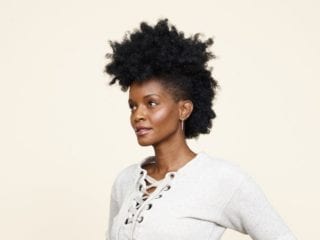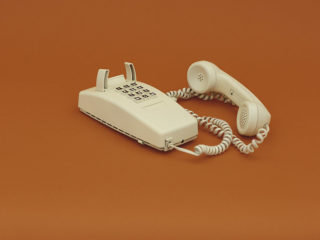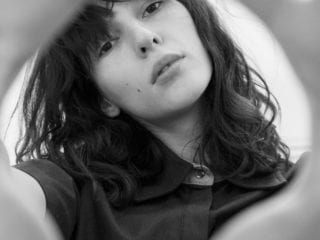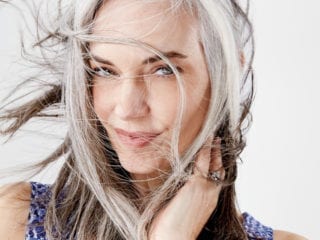Phase One: Action
It started with a burning sensation, first recognized during my walks. I thought maybe I was getting a sunburn on my scalp and shifted all of my walks to later in the afternoon. Then one day, I finally pulled out a mirror and noticed that my hair was thinning at the crown. If you asked me at the time, my symptoms escalated from there, but really they just had my full attention.
In less than a month, I would have tried acupuncture, a ziplock bag of Chinese herbal pills that I was supposed to consume in quantities of eight at a time, purchased new hair cleansing and styling products, scheduled a haircut and made an appointment with a dermatologist.
Phase Two: Denial
The dermatologist sent a biopsy of my scalp off to the lab. In July 2017, I heard the words Central Centrifugal Cicatricial Alopecia (CCCA) for the first time. CCCA is a type of scarring alopecia that can result in permanent hair loss as your body attacks your hair follicles until there are no more. This specific type of alopecia, as there are many, is most prevalent among those of African descent and disproportionally affects women.
My dermatologist at the time recommended that we immediately begin Kenalog injections, a steroid often used to treat inflammation, and triamcinolone acetonide to address the burning feeling. I was confused why only a biopsy was done and no other lab work, but I went forward with the monthly injections and topical cream hoping that they would fix everything. It wasn’t clear to me yet that scarring could mean forever.
Phase Three: Anger
About three months into treatment, my scalp had depressions where the injections had been administered, a common side effect, I was told. I would sob in the shower as huge clumps of hair came out in my hands, leaving my scalp throbbing for hours afterward. This treatment plan wasn’t working.
I would sob in the shower as huge clumps of hair came out in my hands leaving my scalp throbbing for hours afterwards.
I was referred to another dermatologist who explained my diagnosis with the kid gloves off. I’d need injections monthly for the rest of my life. The majority of my hair was not going to come back, and there was no explanation as to why my hair wasn’t responding to treatment. I was then prescribed hydroxychloroquine, an immunosuppressive drug, often used to treat arthritis and malaria—another drug I’d have to take forever to stop the burning sensation.
After that appointment, I felt defeated by the prospect of ingesting medications for the rest of my life to maintain the remaining wisps. So I scheduled my first visit with a functional medicine physician and stopped seeing my dermatologist. I needed someone to explain why this was happening. I felt unattractive, and I was constantly worried about someone discovering my secret. I was too ashamed to tell anyone for months and, even then, less than 10 people knew for years.
I felt unattractive, and I was constantly worried about someone discovering my secret.
Phase Four: Acceptance
During the first appointment, I spent two hours sharing my medical history from birth to present day. Labs were ordered. A plan was established to wean me off Hydroxychloroquine by addressing my inflammation issues. I was ecstatic to finally speak to someone that cared about the “why” as much as I did.
I minimized my intake of foods that cause inflammation like cheese and refined carbohydrates. (Buh bye brie and crackers for dinner!) I introduced supplements like turmeric and iron to further reduce inflammation and support healthy hair growth. We also worked to reduce my cortisol levels, one indicator of stress.
Within the first six months, I was no longer utilizing any prescription medications, and my scalp was beginning to stabilize. I also noticed that I was no longer fatigued after workouts. I was waking up before my alarm went off feeling well rested. I was even able to manage difficult situations like a layoff and my mother’s cancer diagnosis with an air of calm that was unfamiliar to both myself and those witnessing it.
A year and a half later some of my hair had even grown back. While I was excited, it wasn’t the priority anymore. Functional medicine had pulled me out of an unhealthy spiral. I had been an anxious over-achiever ignoring heart palpitations, irrational fears, acne, rapid weight loss and an escalating blood pressure. Had hair loss and the fear of not being beautiful associated with it never happened, I’m not sure what would’ve pushed me to seek help, if anything.
Had hair loss and the fear of not being beautiful associated with it never happened, I’m not sure what would’ve pushed me to seek help, if anything.
I never recognized my behaviors as a problem previously; they were simply the consequences of being driven. They were my normal, so much so that I missed them as I started to heal.
Now, when I look in the mirror I see a woman with the scars of neglect nestled within a sparse plain of hair. I also see a woman who’s whole and confident. My hair loss will continue to be something I navigate, but my health and happiness are on a clear path.
Do you or someone you know live with a hair loss diagnosis? Why is it important to have identity and confidence not solely attached to outward things?
Image via Marissa M. Wu











